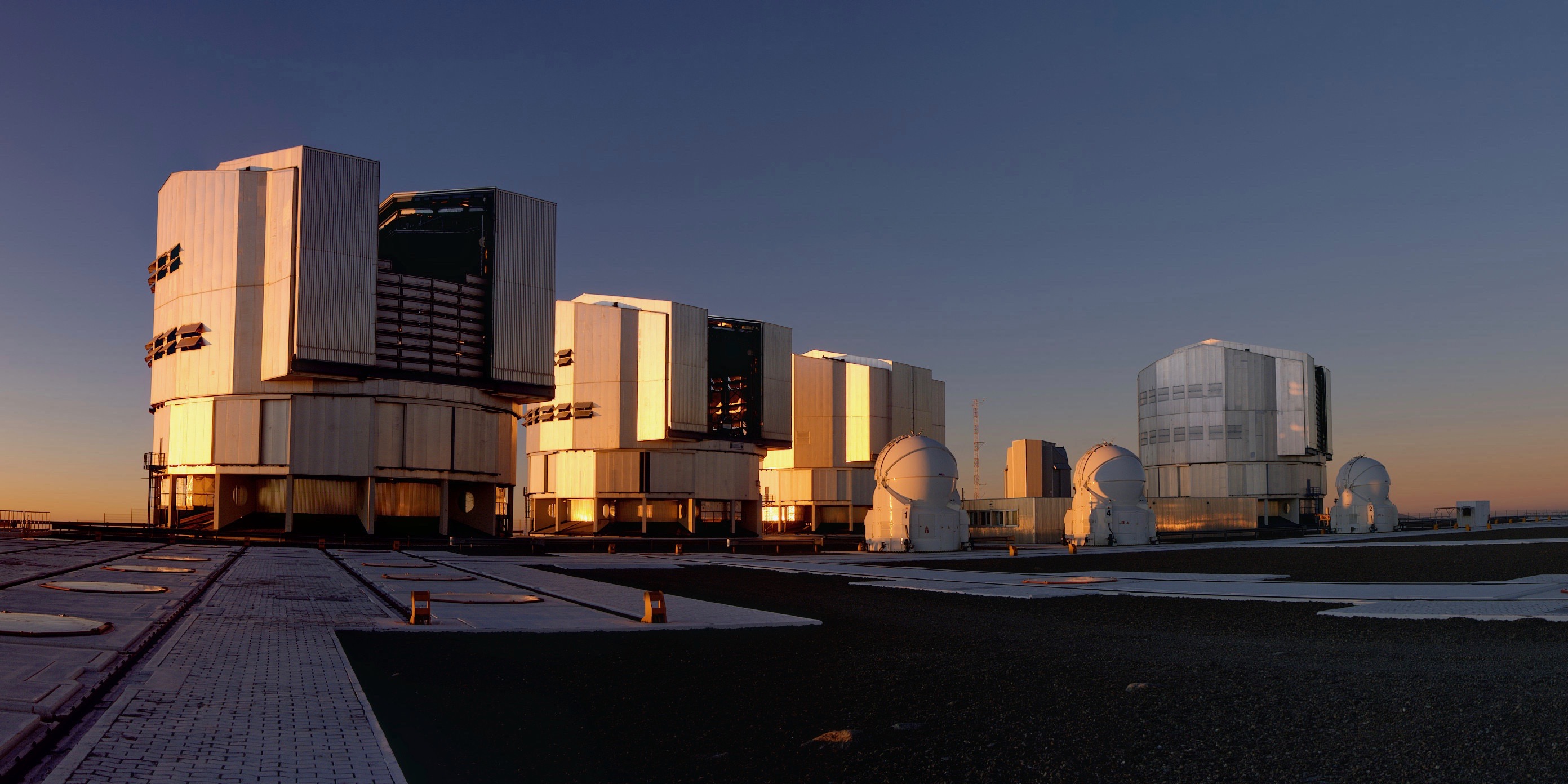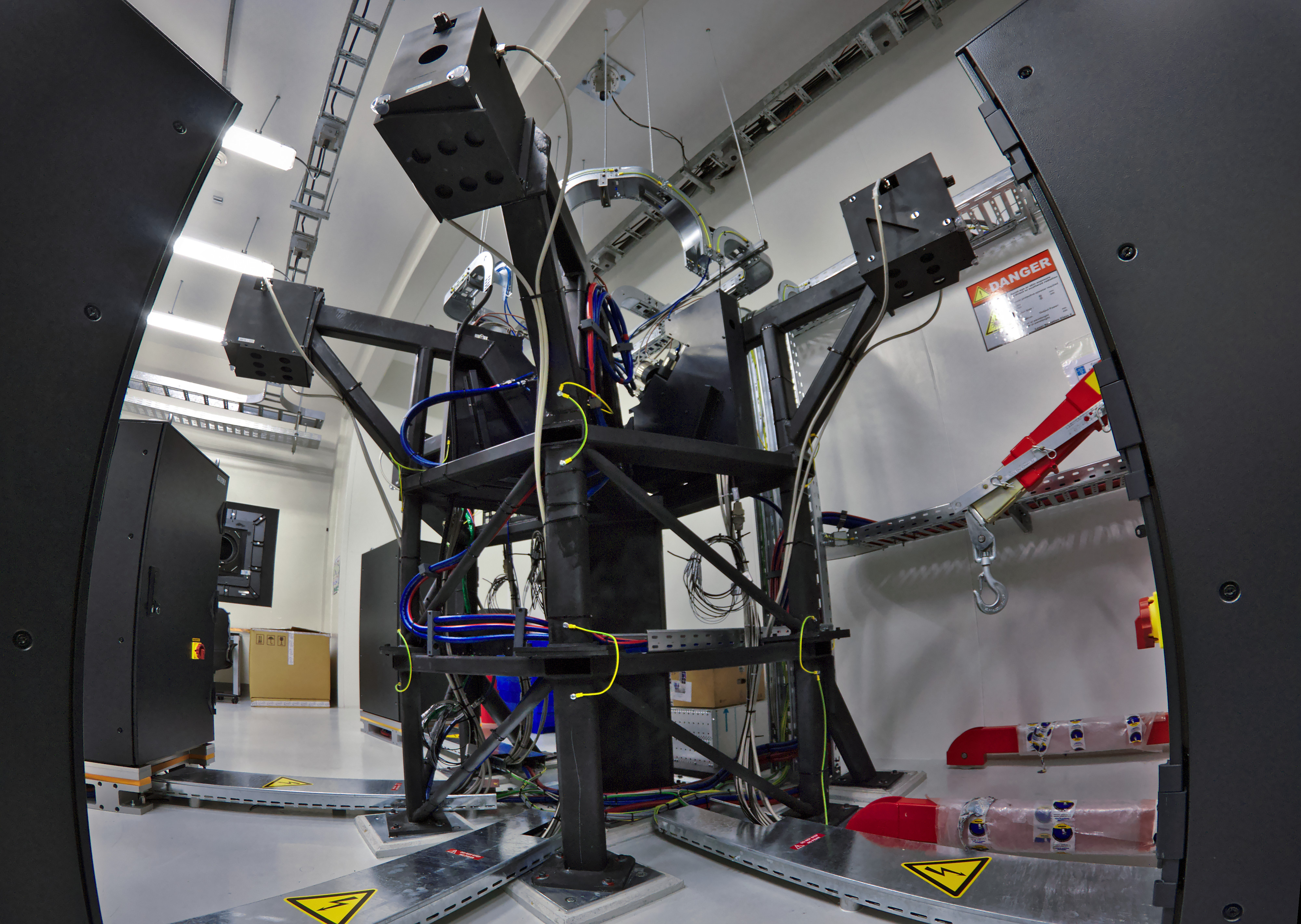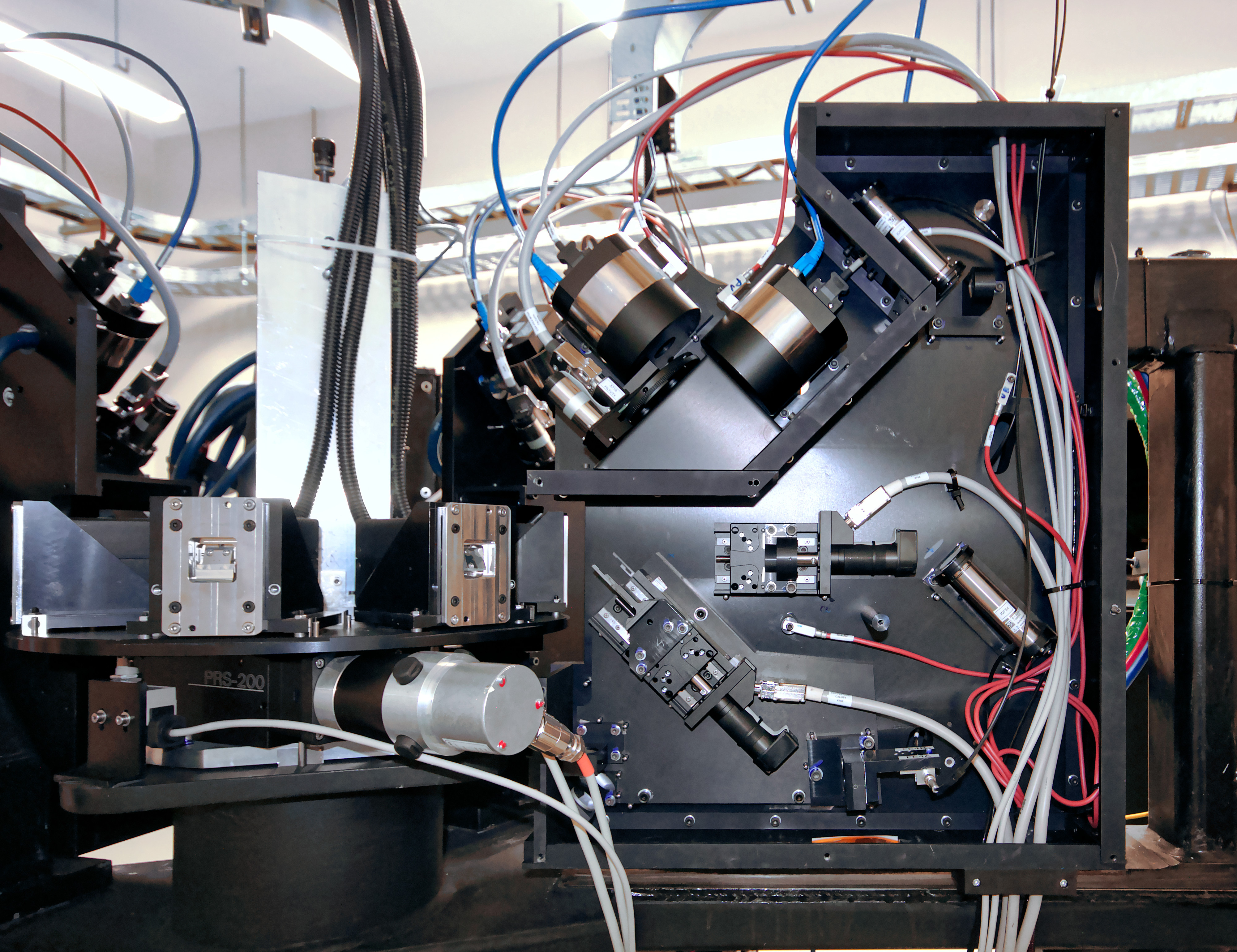Fine-tuning Espresso

ESPRESSO has been opened to the astronomical community and finally started operations on the 24th of October 2018. Since, it is producing scientific data in the so-called 1-UT mode (one single telescope used), and the first results point towards an amazing measurement precision.

The front-end structure of ESPRESSO where the light beams coming from the four VLT Unit Telescopes are brought together and fed into fibres, which in turn deliver the light to the spectrograph itself in another room. (Photo Giorgio Calderone, INAF Trieste )
“It’s not that bad right now,” says Francesco Pepe of PlanetS and Principal Investigator of ESPRESSO in a slightly ironic tone, becoming however immediately more serious: “On quiet stars we could demonstrate radial-velocity precision of 25 cm/s over a full night. At my knowledge this is a world record.” In fact, before ESPRESSO, only HARPS and a handful other instruments worldwide were approaching, although not reaching, these performances. Also on the longer time scales, ESPRESSO seems to meet expectations, since the ‘standard probe’, the famous star Tau Ceti, is showing a dispersion of only 50 cm/s, roughly twice better than HARPS, over several months of observations.
However, life is not as simple as it may appear at first glance. ESPRESSO remains a complex prototype instrument aiming at performances never reached before. Shortly after receiving its first light from sky in November last year, the project team realized that its optical throughput was not quite as high as expected. “By observing photometric standard stars, we remarked that the efficiency of ESPRESSO was about 30% lower than required,” explains Denis Mégevand, the project manager, “a shortcoming that reached up to 70% in the blue part of the spectrum”. “This loss of efficiency does not compromise our measurements, as long as we observe bright objects,” assures Francesco Pepe, nevertheless admitting that for other science cases, like the one of measuring fundamental physical constants over the history of the Universe by observing faint quasars, each photon counts. Therefore, all the team members immediately convinced themselves that every possible action should be taken to recover the original throughput.

The inside of one of the ESPRESSO front-ends where all the active components of the spectrograph are located. (Photo Giorgio Calderone, INAF Trieste)
Optimizing the thermal control
Another area on which the team had been working until the start of operations and beyond is the stability of the instrument. Its temperature must remain stable to a thousandth of a degree, at all levels, on all its components, including the cryogenic parts. “Its not like putting a bottle of white wine in the fridge,” laughs Denis Mégevand, “the system has to measure, monitor and control several tens of temperature sensors with a precision of 0.001°C. This stability is not reached on the very first day, and we are still optimizing the various parts of the instrument’s thermal control.” The consortium’s engineers and astronomers therefore have been looking at the bedside of the instrument to draw diagnosis and propose a treatment. “At the end of a four-week mission in October, we had identified and repaired most of the shortcomings of the instruments,” details Denis Mégevand, “for the efficiency loss, however, we could only identify the causes, which were found in the front end and inside the fiber link.” Especially the fiber link of the medium-resolution (MR) mode, the one that combines the light from the four telescopes, seems to be affected by an efficiency loss.
The ‘treatment’ of the efficiency problem foresees several actions during the next five months. For instance, the optical lenses of the front end will be replaced, but other components, such as the fibers themselves and their micro-lenses, are being examined. Before re-assembling the spare fiber link, which will replace the present one, also the alignment mechanisms shall be improved, since they seem to be the main source for misalignment and thus efficiency losses. Finally, all these items will have to be re-assembled and re-tested before being installed on the instrument in Paranal.
Time is short and the team is working at full speed. The recovery mission will take place in April 2019, just before the 4-telescope mode will be available to the community. With this mode ESPRESSO will become the first instrument operated with a set of telescopes having the equivalent collecting area of 16-m telescope. Astrophysicists are already eagerly awaiting this moment to start probing whether the fundamental constants of physics are indeed invariant over time. (PB)
Categories: Internal Newsletter, News
